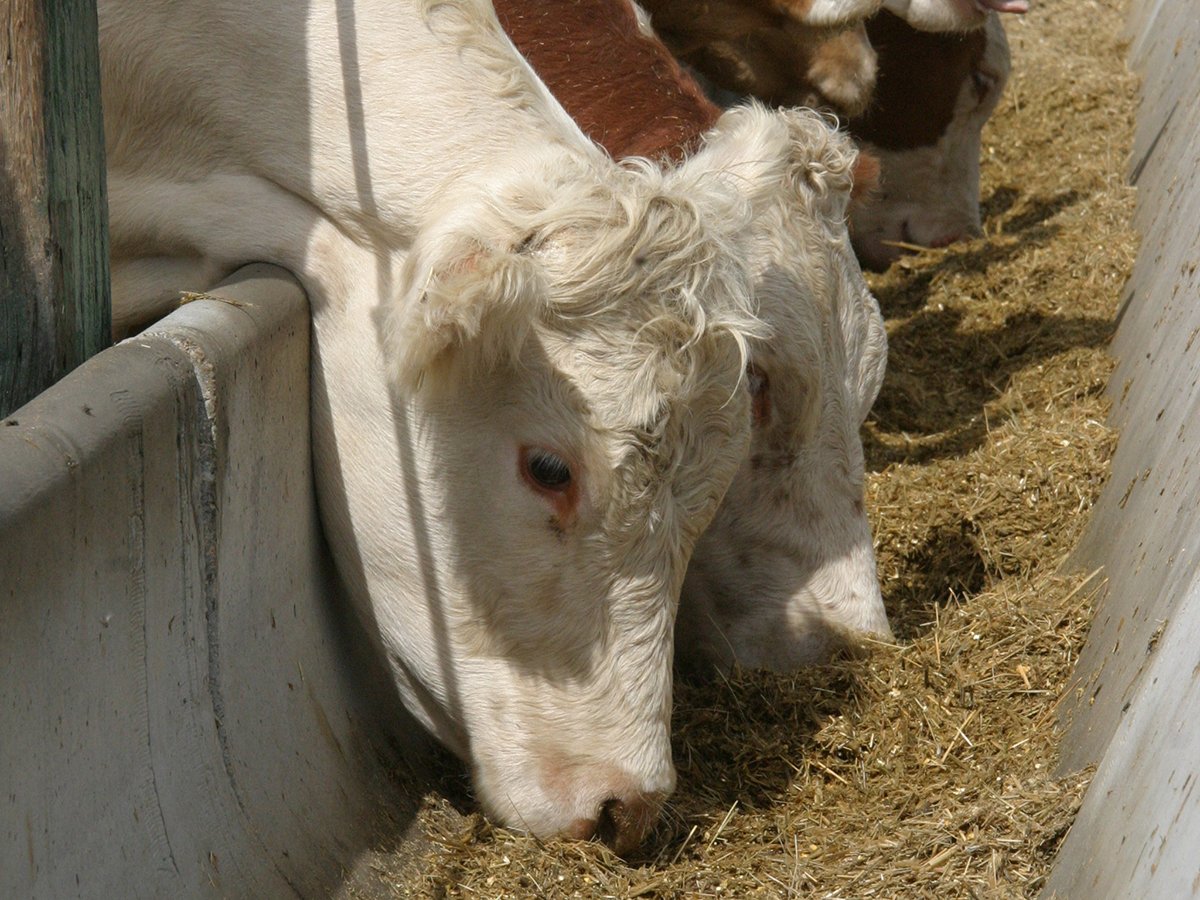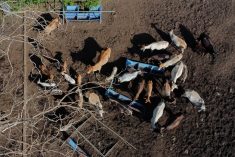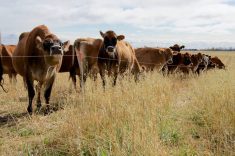Within six months there could be an end of turmoil in financial and commodity markets, but in the meantime, there will be more pain for cattle producers.
“I think commodity markets are oversold. Everybody’s on the run, trying to get the heck out of everything,” Rob Leslie of Canfax said in a market update at the recent Manitoba Cattle Producers Association annual general meeting.
“I think we will still have some rough times ahead.”
With the prime lending rate at 1.5 percent, grain prices low and bred cows cheap, it might be a good time to expand. On the other hand, slaughter cow prices have been holding up, so making an exit might make sense, too.
Read Also

Alberta cattle loan guarantee program gets 50 per cent increase
Alberta government comes to aid of beef industry with 50 per cent increase to loan guarantee program to help producers.
“It’s a good time to make some decisions,” Leslie said.
Statistics Canada numbers released in July put the Canadian beef herd at about 14.5 million head, down from about 17 million in 2004.
Beef breeding cows in July numbered an estimated 4.6 million head, with British Columbia’s herd plummeting nearly by half, making it the leader in the liquidation trend across the country. Alberta is down to less than two million head, Saskatchewan 1.4 million and Manitoba 500,000 head. Ontario’s herd numbers 350,000.
“We think that by the end of the year, we’ll be down to about 4.4 million, and by July 1 of next year, 4.2 million,” said Leslie, adding that the herd might fall to an even four million by January 2010.
Replacement heifer numbers are down the most in a decade, and the percentage of females heading to feedlots is 80 percent, compared to the 15-year average of 66 percent.
Cow culling rates have soared to 14 percent, up from the typical yearly average of 10 percent.
“There were a lot of cows that were held back from 2004 and later years because they were more valuable as a calf machine than as salvage value,” he said.
“I think we’ve just about worked through the culls that were held back.”
The cow herd south of the border is falling along a similar line, with 130,000 cattle going to slaughter each week.
Canadian fed cattle exports to the United States were hurtling along at a record-setting clip for the first half of the year, but in midsummer numbers fell sharply after country-of-origin labelling rules were announced. Numbers picked up again, as packers expected an easy ride from COOL, he said.
“Then, something happened and feeder levels declined to below two year lows. Does anyone know what happened there? That was Sept. 30, and that’s when COOL came along,” he said.
“Some of our good feeder cattle customers got nervous. They weren’t sure what it was going to cost them so they backed off on the market.”
Full year exports south of the border will likely end up 50,000 head short of the projected record-setting 600,000, roughly at the same level as last year.
Feeders at 550 pounds are poised to fall back to last year’s levels, even with barley prices lower, an item that represents 65 percent of finishing costs. Steers at 850 lb. are faring better, mainly due to lower cost of gain, which favours heavier cattle.
Byproduct values, mainly hides, showed the sharpest drop in the latter half of 2008, falling from a high of nearly $45 each to $20 now.
Lower tannery demand for shoes and other leather items has had an impact, but the global auto industry’s woes have effectively killed demand for leather seats, he said.
The dynamics of the beef market have changed, with McDonald’s fast food restaurants showing an 8.2 percent sales increase in October.
A recent consumer survey in New York found 57 percent of respondents would cut back first on dining out, a finding that reflects seven consecutive months of lower sales for the restaurant industry in the U.S.














